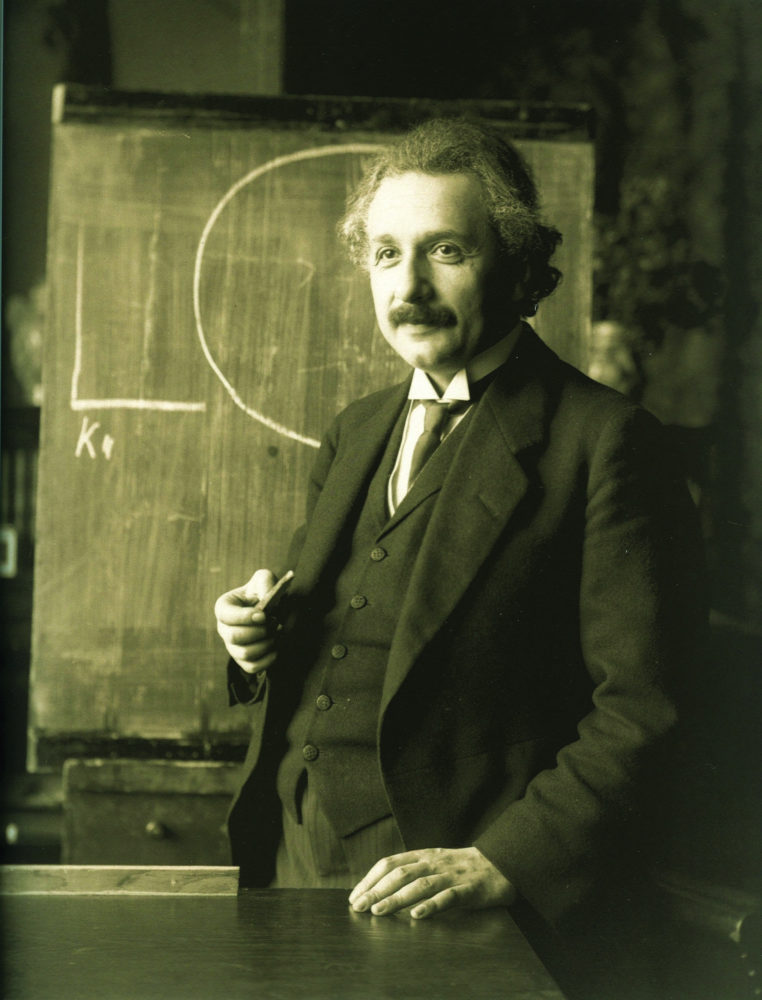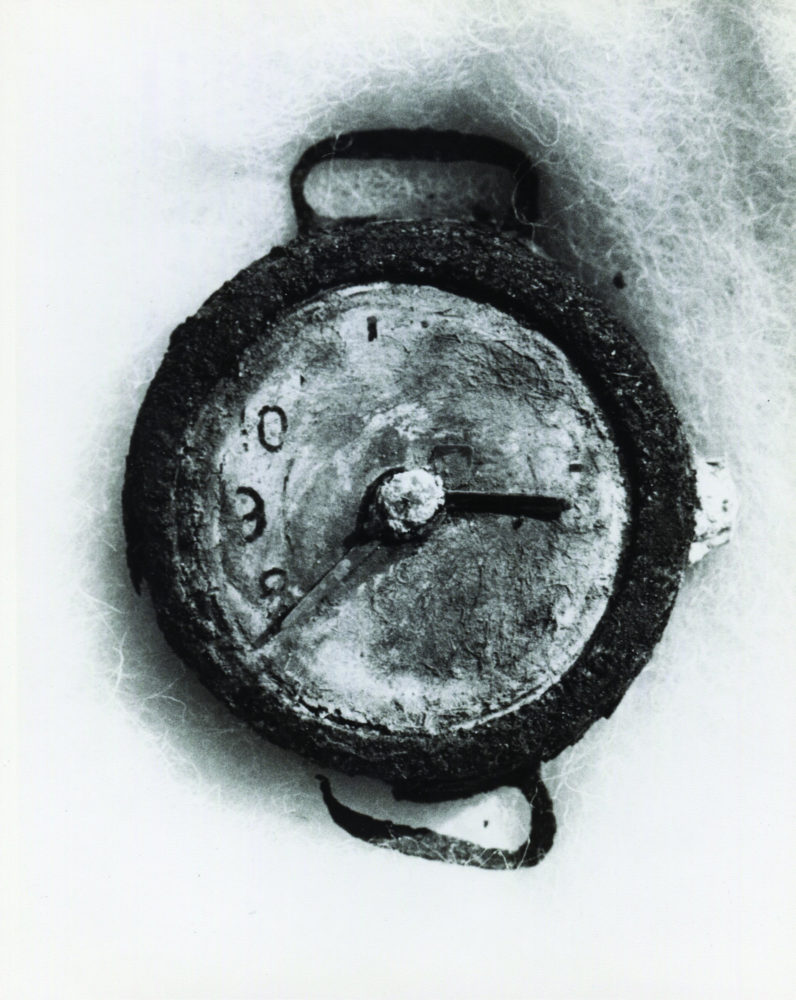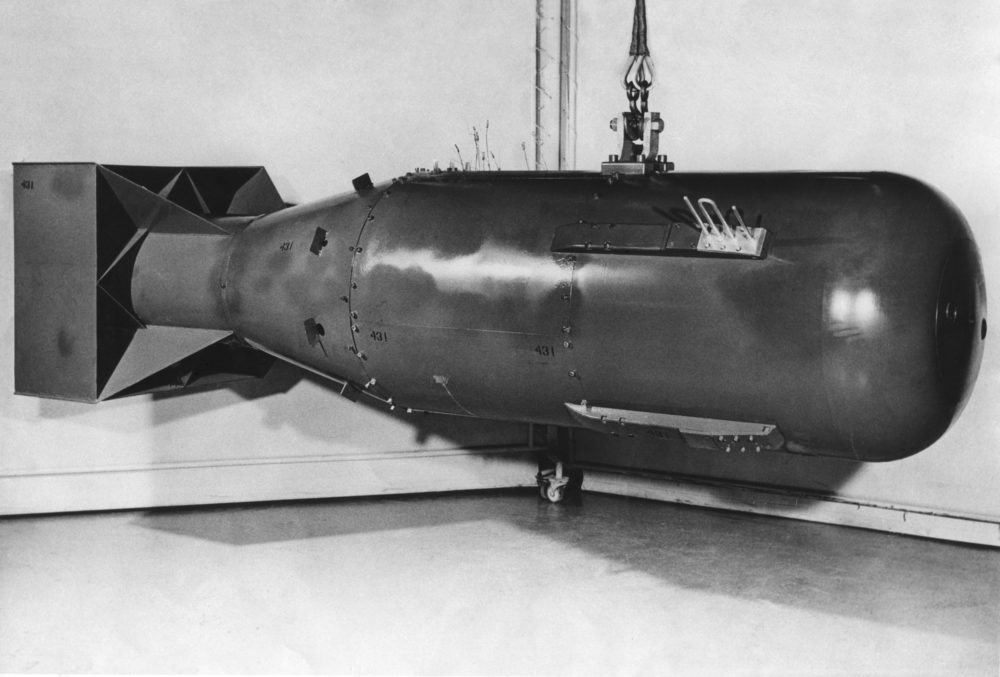 Menu
Menu
 Menu
Menu
Einstein’s theory E=mc2 led physicists to start seriously thinking about ways to split atoms and eventually to the development of the atom bomb.
On July 16, 1945, the American government detonated the first atomic bomb. This pre-dawn test on a stretch of semi-desert New Mexico land—officially given the code name Trinity—is widely considered to be the beginning of the Atomic Age. While the explosion may be a symbolic beginning, the dawn of the Atomic Age happened long before the Trinity test. Years of research across many countries led to the creation of nuclear weapons.
To pinpoint exactly when the atomic bomb was conceived is difficult. To understand the bomb’s history, perhaps it is most useful to look at Albert Einstein’s 1905 theory of special relativity and its famous equation, E=mc2. This theory posits that mass and energy are the same thing. Put more simply, most of the universe’s energy is concentrated within atoms. This means that if atoms could be broken apart, the energy that binds them together could be released. The amount of energy that would come from this is immense: the total energy stored in one kilogram of any substance is equivalent to the energy released from burning three billion kilograms of coal using conventional methods.
Einstein’s theory led physicists to start seriously thinking about ways to split atoms. The first atom was split by New Zealand-born physicist Ernest Rutherford in 1917. However, he believed that it would be impossible to break atoms apart in a manner that would provide sustained energy.
Hungarian physicist Leó Szilárd felt differently. Living in London in the 1930s, he came up with the idea of the “chain reaction.” Szilárd was thinking about the three types of particles that make up an atom: protons, neutrons, and electrons. He thought that if an atom could be hit with a spare neutron, that atom would break apart. The neutrons from the broken atom would hit other atoms, break these atoms apart, and thus spark a chain reaction of breaking atoms. This, Szilárd believed, was the way to efficiently release the energy that binds atoms together.
Physicists in places like London, Chicago, and Montreal were working hard to make Szilárd’s idea a reality. To the alarm of many, so were physicists in Nazi Germany. This led Albert Einstein—on behalf of several leading scientists—to send a letter to American President Franklin D. Roosevelt. The letter lobbied the President to speed up nuclear research, and secure a supply of uranium, the fuel needed for atomic energy. Roosevelt agreed, and convened an advisory committee.
Originally, Roosevelt’s nuclear research program was small. However, the bombing of Pearl Harbour in 1941 propelled the Unites States into World War II and led the Americans to re-think their research efforts. Thus, the “Manhattan Project” was born: an ambitious two-billion-dollar project to explore atomic energy and ultimately create an atomic bomb.
The total energy stored in one kilogram of any substance is equivalent to the energy released from burning three billion kilograms of coal using conventional methods.
The Manhattan Project was led by General Leslie Groves. He was tasked with setting up and overseeing the program, including building research facilities to develop atomic technology and manufacturing plants to purify uranium ore. Groves hired Robert Oppenheimer, a leading physicist of the time, to lead the scientific research. Oppenheimer gathered the elite of the scientific community and moved them to a secret town in Los Alamos, New Mexico. There, they were tightly monitored by the American government and not even allowed to discuss their atom-splitting work with family members.
The Manhattan Project was a massive—and in many ways global—project. Primarily an American project but supported by the United Kingdom and Canada, it included scientists from around the world and in total employed 130,000 people in dozens of locations. Canadian connections to the Manhattan Project include the Montreal Laboratory that housed much of the Canadian, British, and French research on building nuclear weapons. As well, some of the project’s uranium came from Canadian mines.
By 1944, it was becoming obvious that Germany was going to lose the war in Europe. As Germany fell, the Americans learned that the Germans had never come close to creating an atomic bomb. However, this did not put a stop to the Manhattan Project. Instead, the American efforts increased as the war raged on in the Pacific. Their efforts at developing the world’s first nuclear weapon proved successful with the July 16, 1945 Trinity test.
At the time of the Trinity test, Japan was still at war with the Allies. Then-president Harry Truman demanded full surrender, but the Japanese—though experiencing mounting military and civilian casualties—carried on fighting. Further complicating things for Japan was that Stalin had agreed in 1943 that Russia would join the war against Japan once Germany was defeated. These factors led many to believe that Japan’s defeat was inevitable. For many American military planners, however, it was a matter of how to end the war: a bloody land invasion involving hundreds of thousands of troops or dropping atomic bombs.
In preparation for dropping atomic bombs on Japan, American forces issued commands to leave several Japanese cities untouched by conventional bombs. This would enable them to demonstrate to the Japanese and understand for themselves the bomb’s effects.
On August 6, 1945 American forces dropped an atom bomb on Hiroshima. However, this did not bring about immediate Japanese surrender. Three days later, on August 9, Russians invaded Japan and Americans bombed Nagasaki. President Truman promised to “continue to use [the bomb] until we completely destroy Japan’s power to make war.” Already having suffered a two-year-long string of losses, Emperor Hirohito realized defeat was imminent. He ordered a Japanese surrender, thus ending World War II.

Albert Einstein lecturing in Vienna, 1921.

The Hiroshima explosion was recorded at 8:15 a.m. on a wrist watch found in the ruins. August 6, 1945.

A post-war model of 'Little Boy', the atomic bomb exploded over Hiroshima, Japan, in World War II.
Much of the scientific research into developing the bomb was completed in New Mexico. However, the project to build the world’s first atomic bomb began in Manhattan. This is partly due to the fact that atomic energy research was already taking place at Columbia University. Other reasons that the American Army chose Manhattan included:
Originally, the name “Laboratory for the Development of Substitute Materials” was proposed as the name for the project. However, General Leslie Groves wanted a name that would not draw special attention to the undertaking. Thus, he followed standard U.S. Army practice of naming engineering operations by geographical location. Hence, it was given the name Manhattan Engineer District. This was later shortened to the Manhattan Project.